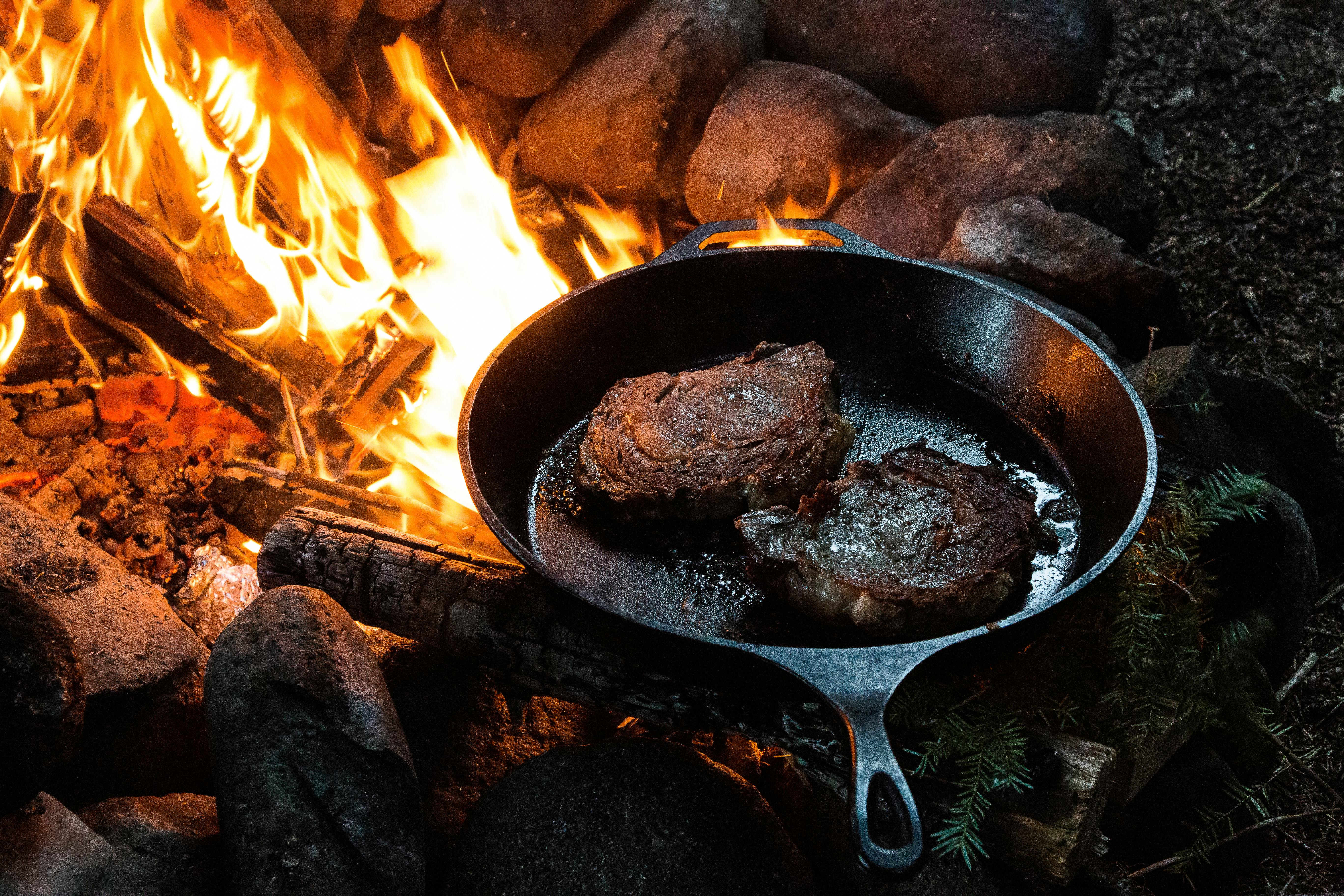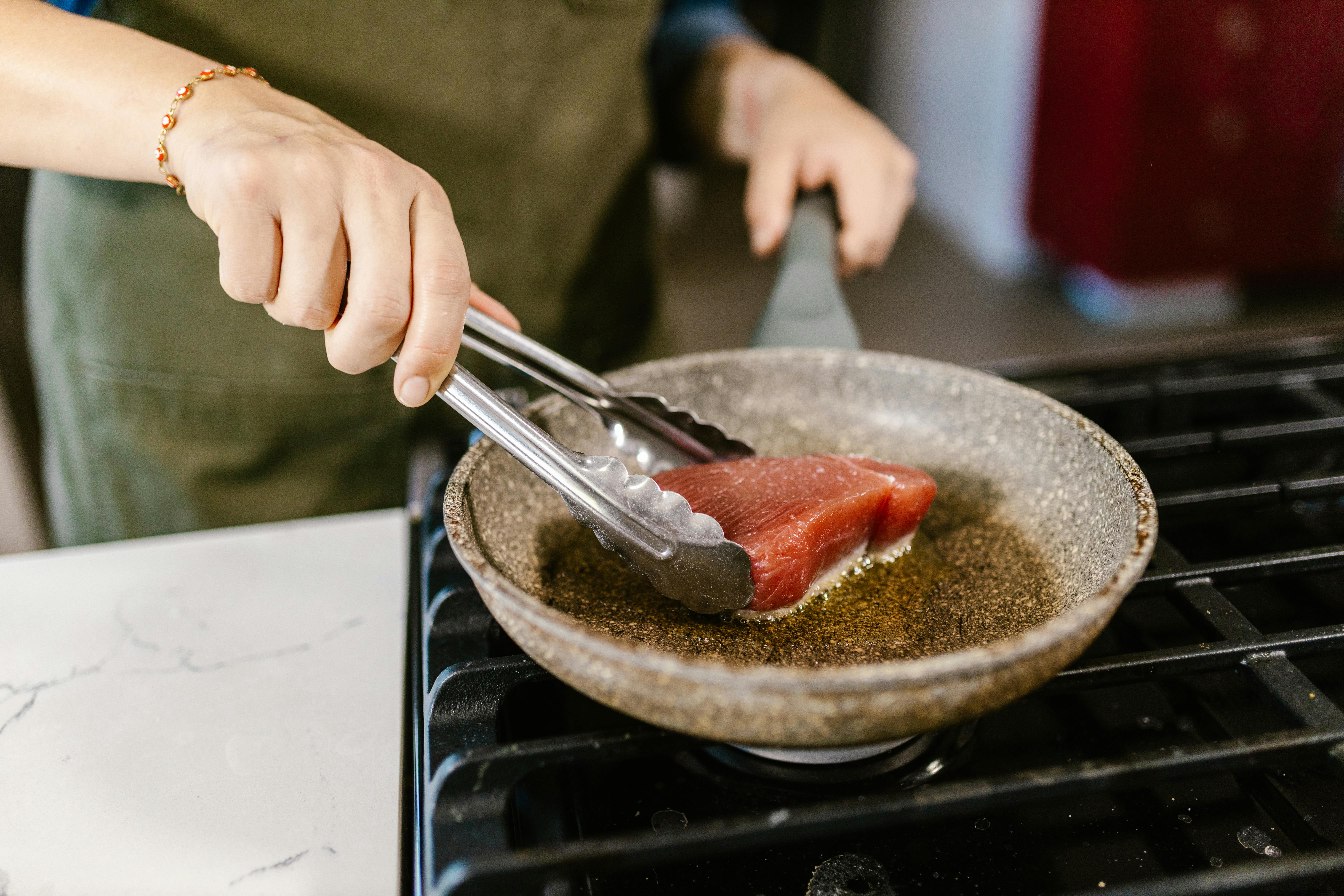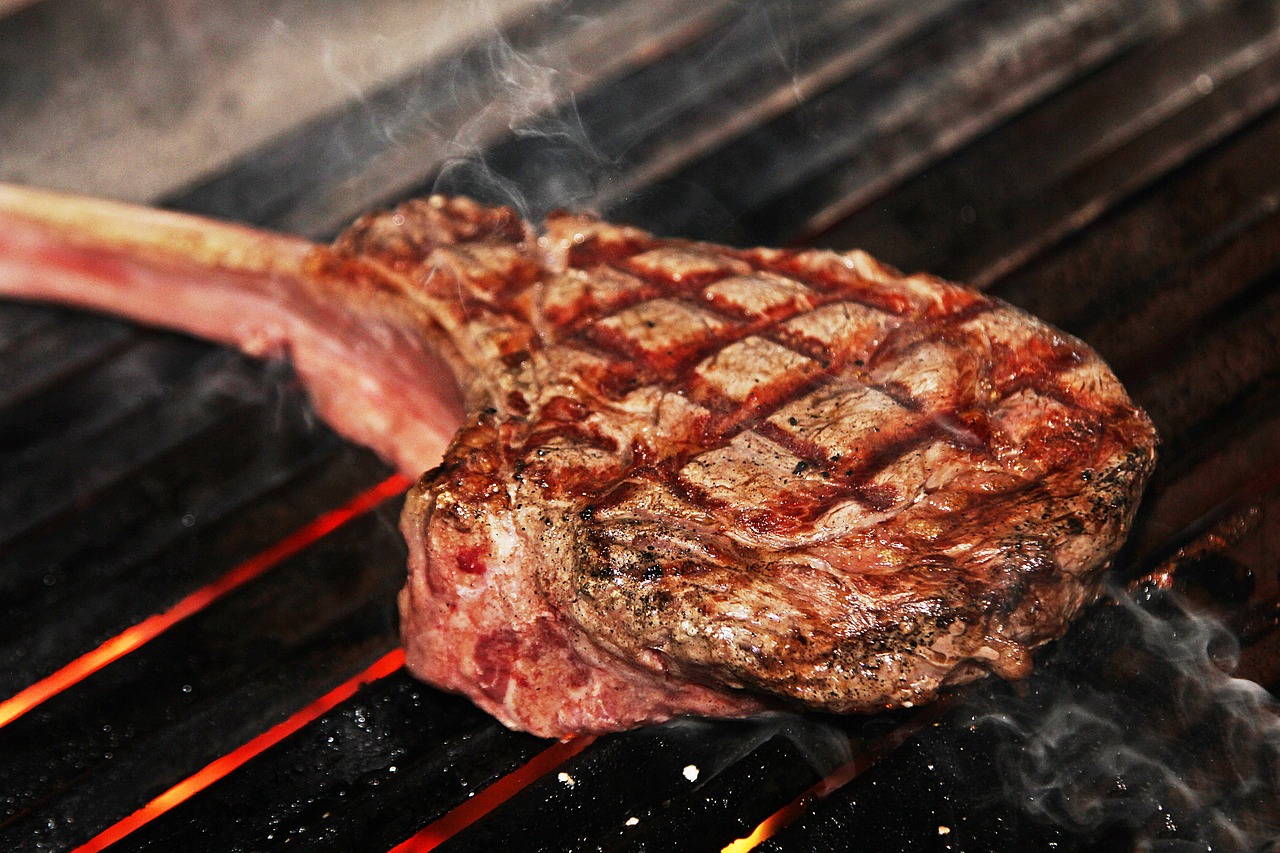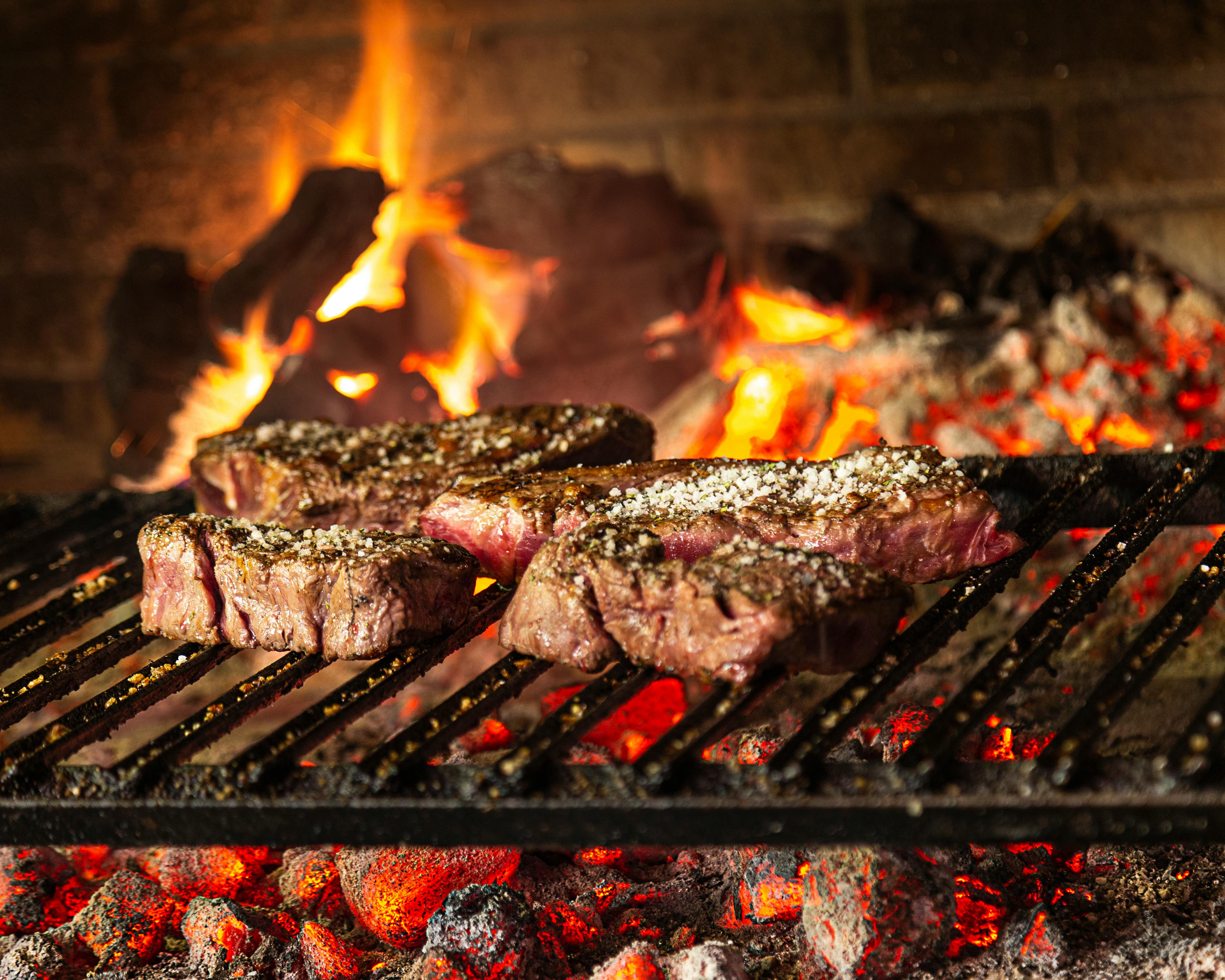How (and Why) to Get a Perfect Sear

The art of searing isn’t art at all. It’s just science. Super simple science that, once understood, will bring the whole neighborhood howling to your door, begging for a bite. Now of course, when you mess a steak up, it will either look like it was boiled in despair or overcooked to the consistency of cardboard.
The trick to a perfect sear lies in understanding a little kitchen chemistry and technique. Let’s start with why you even bother to sear meat in the first place.
Oh, and for the record, I’ll be talking a lot about steak here, but this applies evenly across the board to a bunch of different cuts and types of meat, from pork chops to pot roast.
Why Do We Want a Sear?
It’s not about “locking in juices”—that’s culinary propaganda perpetuated by the uninformed. The real reason is the Maillard Reaction, a chemical process that occurs when the surface temperature of your steak reaches 300–350°F (150–175°C). At this point, the meat’s amino acids and sugars undergo a series of reactions that produce hundreds of complex, savory compounds. This is where the magic happens: the deep, rich flavors and aromas that make a steak taste like a steak. Screw this up, and you’ve missed out on steak’s best party trick.
“Wait, but isn’t the point of a good steak to have it medium rare and pink? What’s this about wanting all that char?”
Okay: pink is for succulent mouthfeel, juiciness, and beefy flavor. Sear is only on the surface and is where most of the actual flavor comes from. You want both. Amateurs usually only achieve one or neither.
The Two Common Steak Mistakes (Misteaks?)
Mistake #1: Underseared, gray surface: If your steak comes out brownish-gray, congratulations—you’ve successfully steamed your meat. This happens because water on the steak’s surface evaporates at 212°F (100°C), and if your pan isn’t hot enough, it never gets past this soggy phase to the Maillard Reaction threshold. The solution? Crank the heat. You want a pan so hot it’s practically screaming for mercy before your steak even touches it. And for the love of all beef, dry the steak thoroughly with paper towels beforehand—moisture is the enemy of browning.
Mistake #2: Overseared surface, overcooked insides: On the other end of the spectrum, we have the overachievers who burn the outside of their steak into oblivion while the inside turns into leather. This happens when you leave the meat on high heat for too long without managing the internal temperature. If this is you, learn about techniques like reverse searing or sous vide. These methods allow you to cook the steak to the perfect doneness beforehand, so the sear is just a quick finishing touch.
Tools and Techniques
Dry the Meat
Grab some paper towels and really, really pat that stuff dry. I already went into this above, but the presence of water will bring your heat way down, and you won’t get any Maillard reaction. If you want a sear, water is your enemy.
Get it Ripping Hot
You want that pan to be so hot that it hurts your hand to hold it over the top. You don’t want it so hot that your oil catches fire, but getting just a little bit of smoke from canola oil is just right, and that is hot!
Use Oil

On that note, use plenty of oil. It’s not like you’re going to eat all that stuff, so don’t worry about the calories. The point is the oil will make consistent contact with your meat much better than the surface of the pan will. So plenty of oil leads to a more consistent, even sear.
What about butter?
Butter is great. Butter is wonderful. Butter browns beautifully and adds a bunch of flavor to any cut of meat. But butter also burns very quickly. So you don’t use it to sear a steak, you throw it in the pan after you sear and use it to baste the steak. Make sure to use plenty of butter—like ⅓ to ½ a stick—to make sure it cools down the pan enough that it doesn’t burn. Remember, you’re not eating all of that butter. It’s more of a cooking medium than a final ingredient.
Cast Iron is King
Cast iron retains and distributes heat like a champ. Stainless steel is okay but can lose heat too quickly when you add meat, and non-stick pans? They don’t handle super high temperatures very well. So forget it—those are for eggs. Once your cast iron is ripping hot (give it at least five minutes to preheat), add a neutral, high smoke-point oil like avocado or canola.

Speaking of glory, let’s dispel another culinary myth: grill marks. Grill marks are an aesthetic lie. They give you lines of sear, not a full crust, which means most of your steak’s surface is missing out on the Maillard magic. A pan-seared steak, with its uniform golden-brown crust, is flavor perfection. If you care about taste, stop prioritizing stripes over substance. Otherwise, if you want your steaks to look impressive to people who don’t actually know anything about steak… go ahead and shoot for those grill marks.
When to Rest
Common meat folklore is to let your meat rest after cooking to let the juices redistribute, otherwise the juices all come spilling out when you cut into it. Here’s the thing… I really don’t care.
There’s no way you’re telling me you cut into a steak and don’t immediately mop up any shred of moisture on the plate. That’s how you eat steak, whether it’s been rested or not. Meanwhile, as you rested that steak, some of the aromatics from your searing have fled (diminishing the flavor), and the steak has partially cooled, reversing some of the internal gelatinization (diminishing the mouthfeel), and ultimately making the steak less juicy than you hoped for.
4 out of 5 times, resting the meat is a myth that we need to put to rest. However, there’s always that rare time when resting makes sense.
If you cook your steak sous vide, resting it for fifteen minutes before you sear actually makes a lot of sense. This will go super far in helping you keep the inside medium rare while achieving the perfect crust. Just don’t rest it after.
Salt, Salt, Salt!

When chefs talk about “seasoning” their meat, they’re not talking about dried oregano. Technically, seasoning just refers to salt.
Season like you mean it.
Salt enhances the Maillard Reaction and helps draw out moisture if you dry-brine the steak in advance (letting it sit, salted, in the fridge for a few hours). It also relaxes (aka unbinds) muscle fibers and causes the steak to be more supple. Also, unlike just about every flavor enhancer in the world, the molecular structure of salt is fine enough that it penetrates muscle fibers and makes its way into the meat.
You don’t want your steak tasting like a spice rack? Fair enough. But you will salt it—don’t make me come looking for you.
Don’t Crowd the Pan
Too much meat at once introduces too much water, which lowers the temperature and sabotages your sear. Cook one, maybe two steaks at a time. This is a simple tip, but it’s easy to forget when your family is hungry and you want to rush.
Now you know the science and the technique. You’re armed with the knowledge to turn out steaks so perfect your friends might actually respect you—assuming you don’t ruin it by bragging about all the Maillard trivia you just learned.
 Matthew Christensen
Matthew Christensen
Weekly Newsletter Contributor since 2023
Email the author! matthew@dvo.com
